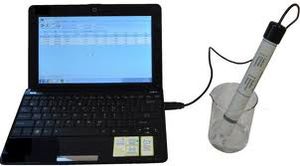Solid State Analyzers
Solid State Analyzer designed for non-invasive measurements on powders, pellets, liquids.It is ideal for implementing in the actual process by means of direct reflectance mode or through a window. In physical and bio-optical sensors have seen significant progress during the last decade, and numerous systems are now deployed regularly collecting underwater data in real time. In chemical detectors, however, are severely lagging their counterparts, and marine chemists still rely for the most part on collecting samples and carrying out shipboard or laboratory analyses. Although significant efforts have been made developing several chemical sensors, they are generally complex, not very user-friendly, and limited in their analytical capabilities.
In response to this problem and the proliferation of remote and interactive real-time underwater process studies, this project has been investigating liquid handling and detection technologies for chemical analyzers capable of more rapid, flexible, and complex analyses. Such analyzers will have wide-scale applications including 3-D underwater chemical mapping, determining chemical gradients at the sediment-water interface or around specific micro-environments, locating chemical sources, and studying biogeochemical processes. The overall goal is to significantly decrease the per-sample cost and handling time, to multiply the potential spatial and temporal data coverage, and to reduce errors due to contamination and sample handling. State-of-the-art microelectromechanical system technology provides a unique opportunity for designing general-purpose miniature fluid-handling systems with integrated detectors. This project has thus been working toward developing complete chemical analyzers with valves, pumps, and detectors on pyrex-siliconwafer chips. Silicon-based analyzers are relatively simple to manufacture using existing etching methods developed by the electronics industry, and will therefore be cost-effective in the long run. A major advantage of this system is that chemistries are fully software driven, allowing a much more rapid adaptation of chemistries and flexible experiments. In the last year a second generation modular analyzer was designed and tested on a 2-by-4 centimeter micromachined pyrex-silicon wafer. Unlike similar biomedical analyzers, this system is based on a new valve designed specifically for liquid and capable of operating at full ocean pressures. The system’s lack of moving parts, small size, and ability to be fully computer controlled, may make these analyzers the next generation of useful in situoceanographic analyzers for dissolved constituents
Video
